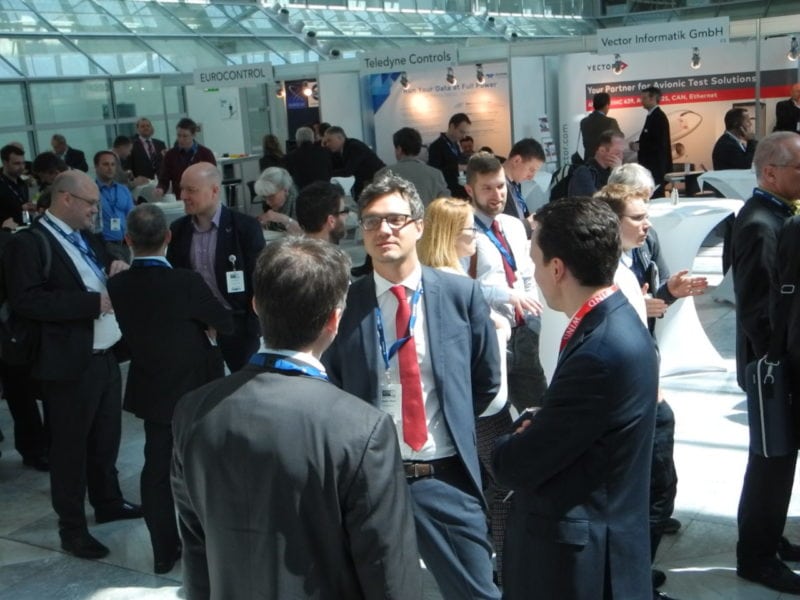
Conference attendees at the 2016 Aviation Electronics Europe exhibition.
Heads-up display (HUD) technology using three-dimensional aircraft windshield projection, RNP to xLS and avionics systems architectures of future air transport aircraft are just a few of the avionics concepts and technologies that will be analyzed at the Aviation Electronics Europe (AEE) conference in Munich, April 25 to 26. Here we provide an overview of some of the latest developments and major topics that will be highlighted during the conference.
First launched in 2008, Aviation Electronics Europe has positioned itself as the essential avionics conference to attend in Europe in recent years. Featuring a two-day conference track, the event features aviation industry experts discussing the latest challenges and opportunities facing the industry regarding the continued advancement of the Single European Sky ATM Research (SESAR) project, as well as the NextGen airspace modernization project in the U.S.
Keynote speakers confirmed for the first day of the conference include Hette Hoekema, senior expert for communication, navigation and surveillance with the European Aviation Safety Agency (EASA). Hoekema will discuss European airspace mandates as well as new regulatory developments being worked on by EASA. The most significant recent regulatory development announced by EASA occurred earlier this month with new certification rules for small general aviation aircraft, which will be finalized by August. EASA is also preparing for upcoming data-link communications and automatic dependent surveillance-broadcast (ADS-B) Out airspace mandates.
Also confirmed as a keynote speaker is Stefanie Erdmann, policy director for Airlines for Europe (A4E). She will discuss the organization’s work with European air transport carriers to comply with future airspace mandates and evolve their operational structures along with the continued evolution of the European air traffic management infrastructure.
The AEE conference organizing team has noted that more than 50 exhibiting organizations will be in attendance, showcasing some the industry’s avionics technologies.
Some of the noteworthy presentations during the conference will include an overview of the future airborne capability environment (FACE) standard. Managed by The Open Group, the FACE Technical Standard and FACE Consortium are working to define an open avionics environment for all military airborne platforms.
Recent developments around FACE include the announcement by Wind River that its VxWorks 653 platform has passed the FACE conformance certification for the FACE Operating System Segment Safety Base Profile. Alex Wilson, director of market development for Wind River, will give AEE attendees an overview of the FACE standard’s impact on the aviation community outside of the U.S.
On the second day of AEE, the last panel of the conference will look at avionics innovations and concepts that will become a reality in the near future. Among these, Phillipe Coni, a display expert for Thales, will discuss a new concept of the use of three dimensional aircraft windshield projection for HUD technology. According to a 2016 white paper published by Coni, the concept can be achieved by the use of “symbol incrustation on the real world (augmented reality) by using simulated collimation offering a large eye-box, in excess of conventional HUD.”
Thomas Maier, a member of the ATM engineering team at Airbus, will also give a presentation focusing on XLS, or the fusion of RNAV and RNP with augmented GPS, in the form of satellite-based augmentation system or ground-based augmentation system technologies.
You can view the entire AEE conference program here.